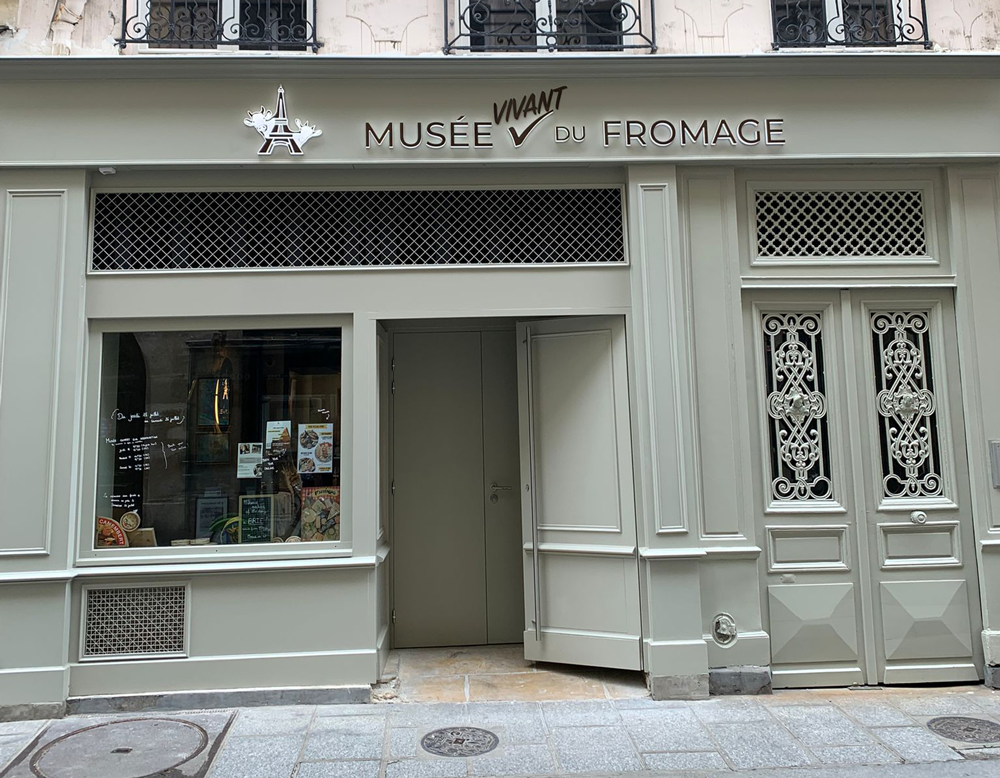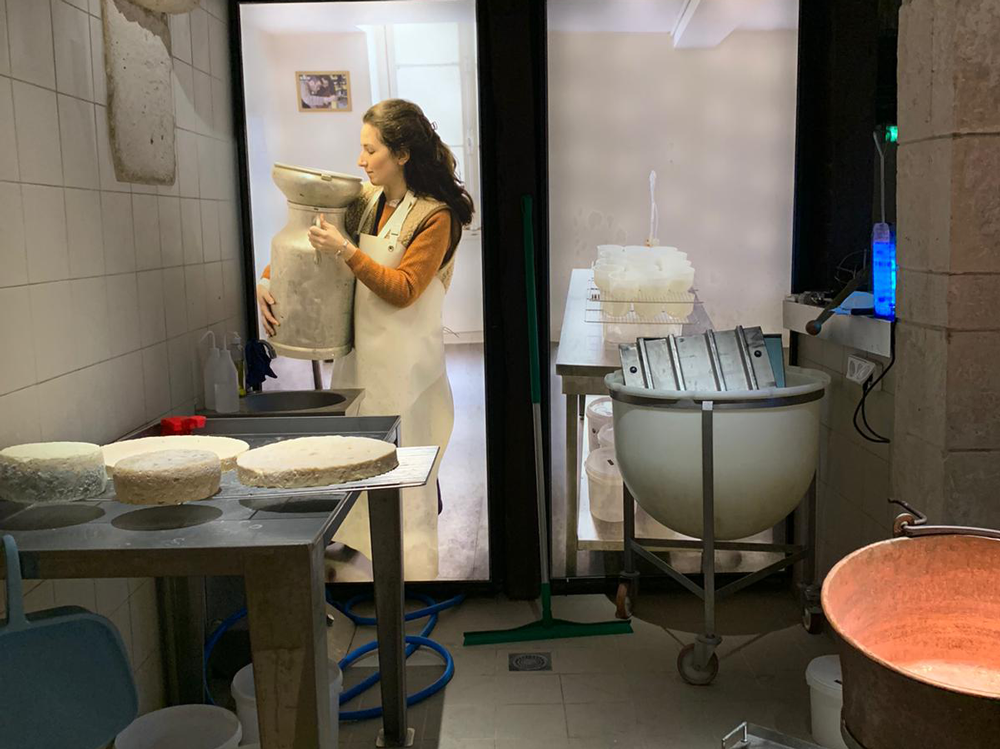France’s first cheese museum puts producers in center stage
At Paris’s Musee du fromage, locals and foreigners can learn about the unique history and varieties of French cheese.
Steps from the Notre Dame cathedral, on land once lauded for its graze-friendly grasses, le Musée du fromage stands as a living lighthouse for the future, adorned in vision and bejeweled by layers of the past.
As France’s first and only museum dedicated to cheese and cheesemaking, Musée du fromage — newborn to the city of love — has its work cut out for it. But if there’s one thing Parisians (nay, everyone) loves, it’s tastefully curated curd, and that’s exactly what Musée du fromage celebrates. Its mission is not only to educate the public about French cheese and its history, but, too, to champion the livelihood of dairy producers across the country.
Museum owner and cheese and wine expert Pierre Brisson sees this attraction’s inception as an opportunity rich with purpose.
“I want to bring the love and understanding of cheese to the public,” Brisson said. “I want people to leave [the museum] thinking about France’s incredible regions and the producers and farmers who live there.”
France is already well known for its cuisine — de la ratatouille et du vin de Bordeaux, anyone? — but little is known about the diversity and particulars of its cheese.
The country contains quite a unique confluence of climates: oceanic, Mediterranean, mountain, and continental. Each provides singular environmental conditions under which food may be prepared, so, by nature of existing under these distinct conditions, French cheese possesses a wide variety of tastes and textures simply by being the product of vastly differing regions.
This fact is highlighted in the museum’s exhibition room, which includes a wall-borne history of how French cheese, in all its variants, came to be. Also included in this space is an interactive screen upon which one may take a quiz determining “what kind of cheese they are.”
Following the exhibition is a small but functional creamery where visitors can view cheesemakers at work in real time, every day of the week. Then, guests are led by their guide to a cheese tasting room, where a variety of French cheese awaits topping a culinary favorites list.
The tour also includes information on over 300 French dairy producers, including farm locations, so guests may further their learning. Ideally, for Brisson, the museum and its encouragement of continued dairy education will inspire a whole new generation of cheesemakers.
“I want people to leave the experience thinking, ‘Now I want to make cheese,’” he said. “There isn’t a lot of advertisement about the profession.”
But why? There are multitudinous national education efforts about French wine. Wineries themselves invite guests to visit their grounds and taste test on-site.
For dairy producers, Brisson said. It’s different. Farmers aren’t likely to invite tourists directly to their farm because animal care and land cultivation has to be carefully monitored and protected. One’s operation is under the inherent risk of whoever is there at any given time, so it carries that producers don’t play host.
This is why a museum like the one Brisson has built from scratch is so important: It provides a window where there isn’t one. It acts as binoculars into the world of dairy farming and cheesemakers, while encouraging further support and appreciation for the people and animals who bring milk and cheese to the table.
If you find yourself in Paris, pay the place a visit. If it’s anything like my globe-trotting sister described it to be on her stop along the Olympic spectator way, you won’t be disappointed.
In the meantime, check out Hoard’s Dairyman Farm Creamery’s selection. It may not be French, but it stands the test of excellence.



